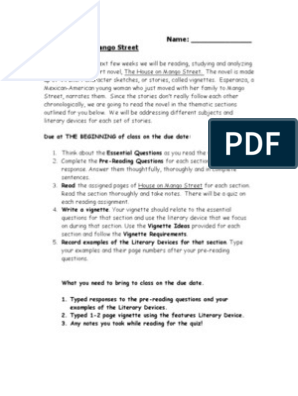0% found this document useful (0 votes)
3K views8 pagesYoung Latina's Journey in Chicago
vignetta The House of Mango Street primer año de ingles ies 9-001
Uploaded by
abbyce22Copyright
© © All Rights Reserved
We take content rights seriously. If you suspect this is your content, claim it here.
Available Formats
Download as PDF, TXT or read online on Scribd
0% found this document useful (0 votes)
3K views8 pagesYoung Latina's Journey in Chicago
vignetta The House of Mango Street primer año de ingles ies 9-001
Uploaded by
abbyce22Copyright
© © All Rights Reserved
We take content rights seriously. If you suspect this is your content, claim it here.
Available Formats
Download as PDF, TXT or read online on Scribd
/ 8






















































































































